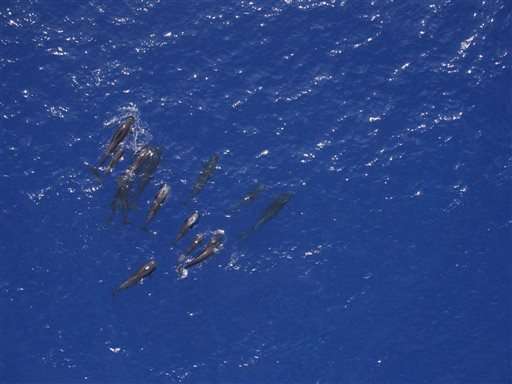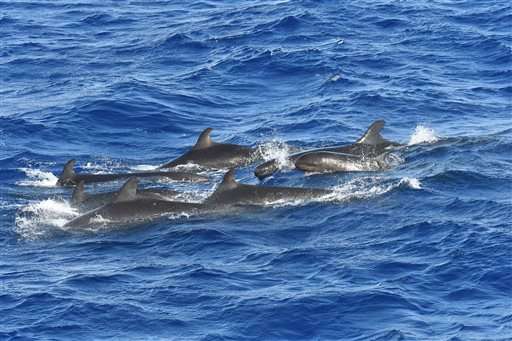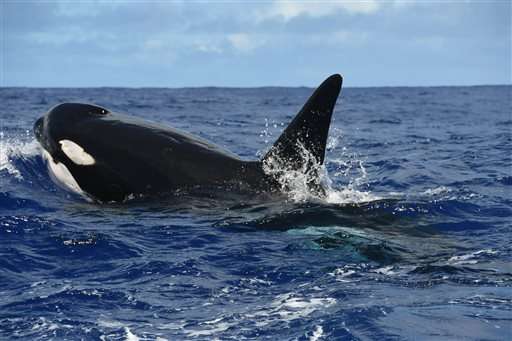NOAA: Drone technology aids whale research off Hawaii

Federal researchers returning from a 30-day expedition to study whales and dolphins around the Hawaiian Islands said they are looking for clues to help sustain healthy populations of the marine mammals.
National Oceanic and Atmospheric Administration scientists told reporters Thursday that gathering data on the animals is often difficult, especially around the windward coasts of the Hawaiian Islands.
The researchers worked from a large ship, instead of using their normally small survey boats, and explored the coasts of the main Hawaiian Islands where wind conditions and severe weather make it difficult to navigate and remain at sea for extended periods of time.
The team also used a hexacopter drone to photograph the whales and dolphins, something they have never done before in this region.
Using drones allows researchers to get better images of groups of whales because they are not disturbed by the approaching boat, said NOAA's Erin Oleson, who led the expedition.
The vantage point of the drone also allowed them to more accurately count the number of individuals in a pod, including mothers and calves that sometimes stay underwater. The number of calves helps researchers gauge the whale's reproductive health. The perspective also allows the scientists to get more accurate size estimates for individual whales.

"This is the first time that we've used (drones) as part of our research here in the Pacific islands, and it's also the first time it's been used to estimate group sizes," Olsen said. "We wanted a way of calibrating the observers."
Olsen said there are over 20 species of dolphins and whales around the Hawaiian archipelago.
The researchers took tissue samples and attached satellite tags to some whales to monitor their movements. Understanding the animals' movements in conjunction with events like El Nino help inform the researchers' understanding of the impacts of climate change and warmer water temperatures.
The team had three separate encounters with killer whales, which are rarely seen around Hawaii. They found one pod of orcas off the coast of Maui and another off the coast of the Big Island. Days after finding the Big Island group, the researchers found the same group again.

One whale they did not see but had hoped to was the beaked whale. Using underwater acoustic detection technology, scientists heard the calls of an unidentified species of the elusive beaked whale, but despite tracking them for several hours the researchers never saw the creatures. Beaked whales dive to extremely deep levels and only surface for air about once an hour, making them hard to identify and study.
Olsen said whales and dolphins are a critical part of the overall ecosystem around the islands. If populations decrease, as is the case with false killer whales, the oceans food chain becomes unbalanced and could impact the entire ecosystem.

© 2016 The Associated Press. All rights reserved.




















